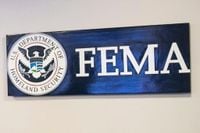Six months after a devastating tornado tore through St. Louis and just months after catastrophic flooding battered Vermont, a new era of disaster recovery is unfolding across the United States. In both states, communities are struggling to rebuild, but many say the federal government’s shifting approach to emergency aid—spearheaded by President Donald Trump’s administration—is leaving them out in the cold.
In Vermont, the summer of 2025 brought yet another round of flooding to Caledonia and Essex counties, marking the third consecutive year the state has faced major storm damage. Governor Phil Scott, in August, requested a major disaster declaration from the federal government, hoping to unlock Federal Emergency Management Agency (FEMA) funding to help towns repair critical infrastructure and shore up defenses against future floods. The initial estimate of $1.8 million in damages surpassed the $1.2 million threshold for federal disaster aid. But by mid-November, state officials had revised the estimate dramatically upward—closer to $4 million, largely due to unexpectedly high rebuilding costs in the hard-hit town of Sutton.
Yet, in late October, President Trump rejected Vermont’s request for FEMA assistance. According to VTDigger, Trump’s decision came on the same day he denied similar disaster aid applications from Illinois and Maryland, both states with Democratic majorities. Meanwhile, requests from Republican-leaning states like Alaska, Nebraska, and North Dakota, as well as the Leech Lake Band of Ojibwe in Minnesota, were approved. The Department of Homeland Security, in a statement to VTDigger, insisted the process was “non-political,” explaining that Vermont’s damage was “not of such severity and magnitude as to be beyond the capabilities of the state and affected local governments to recover.”
Governor Scott, who initially hesitated to challenge the White House’s denial, told reporters on November 13 that the higher damage estimates had changed his mind. “We are working on something right now to appeal the decision based on the increased dollar amount,” he said. Vermont now has until November 21 to file an appeal, and state officials are working closely with local leaders to strengthen their case for federal help.
The consequences of these policy shifts are even more visible in St. Louis, where the scars of a May 2025 tornado remain painfully fresh. According to NPR, the storm caused more than $1 billion in destruction and damaged over 5,000 buildings. Driving through the city, NPR’s Sacha Pfeiffer described “block after block of huge tree stumps and countless houses with missing roofs.” Six months on, many neighborhoods—especially majority Black areas in the city’s north—still look as though time has stood still. Boarded-up windows, exposed interiors, and residents living in tents on their front lawns are a stark testament to the slow, uneven recovery.
Soldan International Studies High School, a magnet school serving more than 300 students, remains shuttered. Repairs aren’t expected to finish until December 2026 at the earliest, leaving families and students in limbo. “If you look, there’s tons of boarded-up windows,” St. Louis Public Radio’s Hiba Ahmad told NPR. “The district has shared that this school, probably, the repairs on it are not going to be done until next December.”
For many residents, the aftermath of the tornado has been a crash course in the new reality of disaster aid. President Trump’s administration has made no secret of its intention to shift the burden of recovery from FEMA to the states. “We want to wean off of FEMA, and we want to bring it down to the state level,” Trump said in June, as reported by NPR. The agency’s capacity has also been reduced, with cuts eliminating a third of its staff.
Residents like Larry Powell, a Marine Corps veteran, say the changes have left them stranded. “FEMA has not offered any assistance. Numerous people have applied to FEMA, and they were declined. And they have you jumping through so many hoops,” Powell told NPR. The city’s chief recovery officer, Julian Nicks, agreed that the process has been confusing and discouraging for many. “FEMA didn’t do door-to-door knocking. They did not have their typical operations where people do door-to-door to reach. So there are some people who didn’t come into our disaster assistance centers. We know that. We also know that there are a bunch of people who did, and they got frustrated with the paperwork and the process.”
The paperwork, in fact, has become its own barrier. Nicks explained that many residents, especially those in lower-income or multi-generational homes, found it nearly impossible to provide the documentation FEMA required. “Think about taking a family that makes less than $40,000 a year, who is uninsured, and then you go tell them, after they just lost generational home that they inherited, that, hey, you need to provide more insurance paperwork. Or, hey, this title still has your grandmother’s name on it, and because of that, you’re not eligible 'cause you’re not the title owner.”
FEMA did approve assistance for more than 9,300 people in St. Louis, directing over $50 million to residents. But as Mayor Cara Spencer told NPR, “There is a huge gap in what residents need and what we’ve been able to provide. That is unequivocal, just an enormous—a gulf of need that we have been unable to meet at this time.”
Local nonprofits have stepped in to fill some of the gaps, but their resources and expertise are limited. “In the early days of this storm, the city did not have the infrastructure to be able to respond to a disaster like this, and they’ve been really open about that,” Ahmad said. As the city struggled to organize a response, it was volunteers and community groups—not government agencies—who first cleared debris and offered support.
For residents like Kim Holt, the frustrations are personal and ongoing. After the tornado ripped the roof off her family’s home, she applied for FEMA assistance but was denied. City programs offered help, but only months later—too late for immediate needs. “Why did it take you three months after I applied to call me, as if you think we’re still standing in the same position? We were blessed not to be. But how do you think that’s possible?” Holt told NPR.
Back in Vermont, state officials are also facing scrutiny over their use of disaster relief funds. Legislators questioned Doug Farnham, the state’s chief recovery officer, about a $2.9 million grant used to help 2024 flood victims navigate FEMA applications. As reported by VTDigger, a significant portion of the money went to administrative costs and a multinational consulting firm, Guidehouse. Farnham defended the spending, stating, “It was all necessary administrative work. It was building the systems, training everyone, putting everything together.” He acknowledged the facts in recent reporting but argued the narrative was “framed as negatively as you could” toward the state.
As winter approaches, both Vermont and St. Louis face daunting recovery challenges. In the words of Mayor Spencer, “As a nation, we would be better off, more efficient and certainly more effective if we centralize and share the resources and expertise across the nation for very unusual events, rather than saddling every single municipal government to being able to respond to what may or may not happen in the lifetime of each of those cities.”
For now, the experiment in shifting disaster recovery from federal to state and local governments continues—with real people, their homes, and their futures hanging in the balance.






